Table of Contents
- Historical Overview of Coca-Cola: Brand heritage
- Branding Strategies and Iconic Advertising Campaigns
- Strategies behind Coca-Cola brand’s success
- Why Coca-Cola Remains Unbeatable
- Consistency Across Cultures: How Coca-Cola Maintains a Consistent Message while Adapting to Diverse Cultures
- Environmental Consciousness: Reviewing Coca-Cola’s Efforts towards Sustainability and Eco-Friendly Practices
- Community Engagement: How the Brand’s Social Responsibility Initiatives Enhance Its Reputation and Influence
- Conclusion
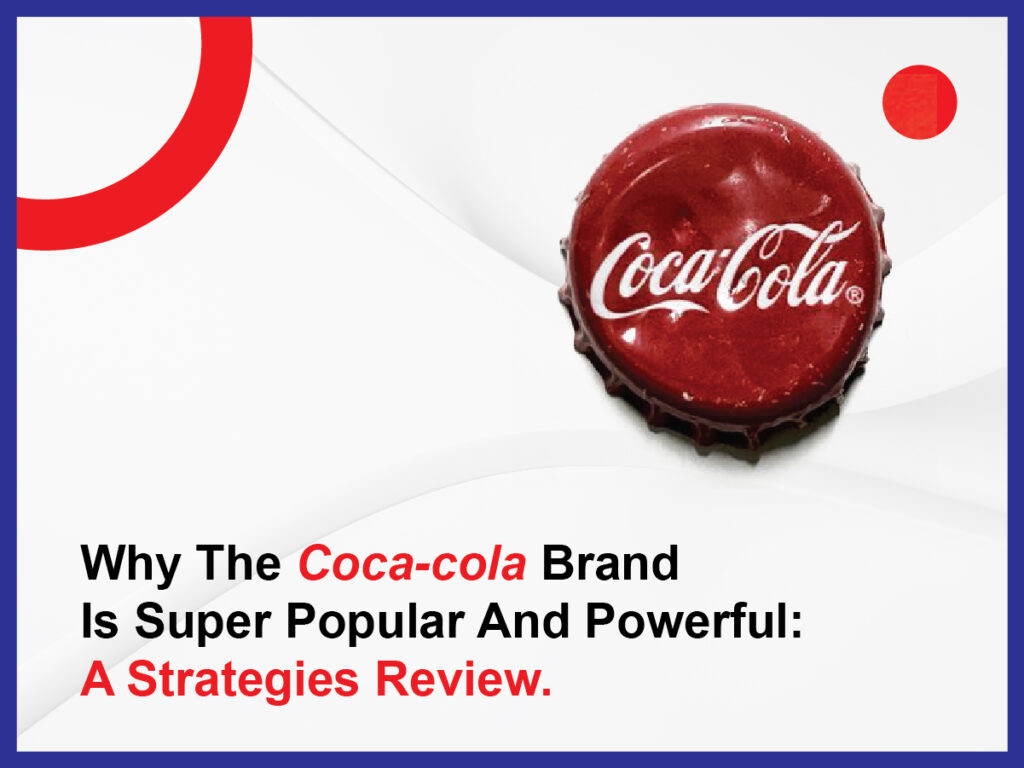
Coca-Cola is one of the most well-known brands globally, with its logo and instantly recognizable red swoosh almost as ubiquitous as its flagship product. The Coca-Cola Company has a long history of success, with its first ever glass of Coke having been poured in 1886. Today, the brand can be found almost everywhere, from supermarkets and convenience stores to vending machines and restaurants worldwide.
But why is Coca-Cola so incredibly popular and powerful? The company has employed various strategies over the years to ensure it stays at the forefront of consumers’ minds. In this post, we will review the most effective of these strategies and explain how Coca-Cola has become the household name we know it as today.
Historical Overview of Coca-Cola: Brand heritage

Before we dive into the strategies that contributed to Coca-Cola’s success, let’s first look at how the company began and the early strategies that helped create the brand. In 1886, pharmacist John Pemberton first created Coca-Cola as a medicinal drink to help cure headaches. The drink was first marketed by Pemberton and his partner, Frank Robinson, as a refreshing beverage that could revive customers with its unique taste. A few years after its introduction as a beverage, Coca-Cola was sold in bottles, and the rest, as they say, is history.
Coca-Cola’s rich heritage is evident in its iconic logo, which has remained unchanged for over 134 years. It is a testament to the brand’s commitment to maintaining its image and message. Coca-Cola’s image is that of a classic brand that has been able to withstand the test of time and always remain relevant and fresh.
Advertising had always been essential to the brand’s success, with the first Coca-Cola ad being published in a newspaper in Atlanta in 1886. This was followed by various print and outdoor ads throughout the early 1900s. By the 1920s, Coca-Cola had cemented itself as a household name in America, thanks in part to a famous advertising campaign featuring Santa Claus holding a bottle of Coke.
Branding Strategies and Iconic Advertising Campaigns
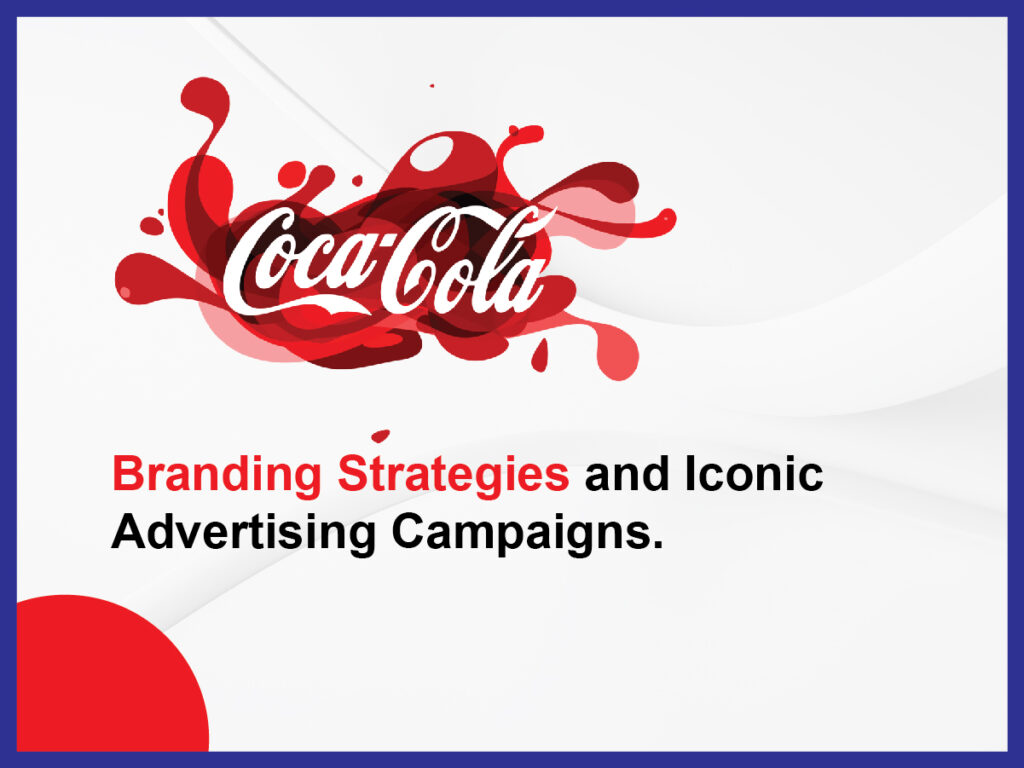
Coca-Cola’s branding strategies have been a consistent driving force behind the brand’s success. The brand has established a strong, consistent brand identity that has remained recognizable and timeless over the years. One of Coca-Cola’s most iconic branding efforts was its logo, which was first introduced in 1887 and has undergone only minor revisions since then.
Advertising has also played a critical role in establishing Coca-Cola’s brand identity. The “Share a Coke” campaign, which was launched in 2011, was a brilliant example of how Coca-Cola has successfully connected with consumers through its advertising efforts. The campaign involved replacing the Coca-Cola logo on bottles and cans with popular names and phrases, essentially turning the product into a personalized gift. This effort was incredibly successful and generated a significant amount of social media buzz, leading to an increase in sales.
In recent years, Coca Cola has also embraced social media, using platforms like Facebook, Twitter, and Instagram to engage with its fans and create a sense of community around the brand. By sharing user-generated content and responding to customer comments, Coca Cola has shown that it values its customers and is committed to building a relationship with them.
Strategies behind Coca-Cola brand’s success

- Iconic Brand Identity
Coca Cola’s brand identity is one of the most identifiable and recognizable around the world. The iconic logo, with its red and white color palette, is instantaneous in its ability to evoke the beverage company. The font, which has been used since the brand’s inception, also brings forth a sense of nostalgia for the older generations, while appealing to the younger ones as well.
The Coca Cola Company’s brand messaging has always been consistent. It has been able to maintain a relatable, friendly, and approachable image throughout its existence. The ads, packaging, and overall brand experience align with the image they initially created, which is why consumers feel connected to the drink.
- Consistent Campaigns
Coca Cola’s marketing campaigns are iconic, compelling, and easily memorable. Consistency is one of the essential factors in building a brand, and Coca Cola has consistently produced creative and cheerful campaigns that showcase their product. The memorable campaigns like “Share A Coke” and “Taste the Feeling” have driven consumer engagement significantly.
Coca Cola has created ads and commercials that tug at the heartstrings, promote nostalgia, and make their product an essential part of everyday life. Whether it’s watching a Christmas ad or an uplifting summer campaign, Coca Cola’s advertising campaigns stay on the pulse of what consumers want and create new experiences that remain ingrained in customer’s minds.
- Product Diversification
Coca Cola has diversified its portfolio, which helped in establishing it as the world’s largest beverage company. The diversified portfolio includes not only carbonated beverages but other popular beverages like juices, sports drinks, bottled water, teas, and coffee drinks. The expansion was necessary to cater to their diverse audience and keep up with emerging trends.
Through this diversification, Coca Cola has been able to appeal to different segments of the market. For example, the company’s acquisition of Vitamin Water helped attract consumers who valued health and wellness, while it’s coffee brand, Costa Coffee, appeals to the coffee lovers out there.
- Global Presence
It is impossible to mention the reasons behind Coca Cola’s success without outlining the company’s global presence. The company operates in over 200 countries worldwide, making it a household name for so many people globally. In addition, the company has localized marketing campaigns tailored to specific countries they operate.
The localized marketing allows Coca Cola to engage with their audiences at a personal level, emphasizing that the company cares about the local customers. In the Middle East, for instance, Coca Cola ads feature images of locals celebrating the legitimacy of the brand, emphasizing the company’s commitment to respecting cultural norms.
- Inclusivity
Coca Cola has always been at the forefront of promoting inclusivity, and that has not gone unnoticed by consumers. The company has several initiatives that are aimed at improving the communities where they operate, such as supporting education, providing clean drinking water, and supporting environmental causes.
Coca Cola has been able to turn the brand into a symbol of good, and that has helped foster a loyal community of consumers who believe in the brand’s mission. The company continues to support various groups, including LGBT+ and Black Lives Matter, further proving that the company cares about people from all walks of life.
- Innovation
Finally, Coca Cola has been able to maintain its position as a market leader by embracing innovation. The company has continually introduced new products and flavors over the years, keeping its lineup fresh and exciting. Whether it’s new soda flavors, energy drinks, or ready-to-drink coffee, Coca Cola is always looking for ways to innovate and meet the changing demands of consumers.
Why Coca-Cola Remains Unbeatable
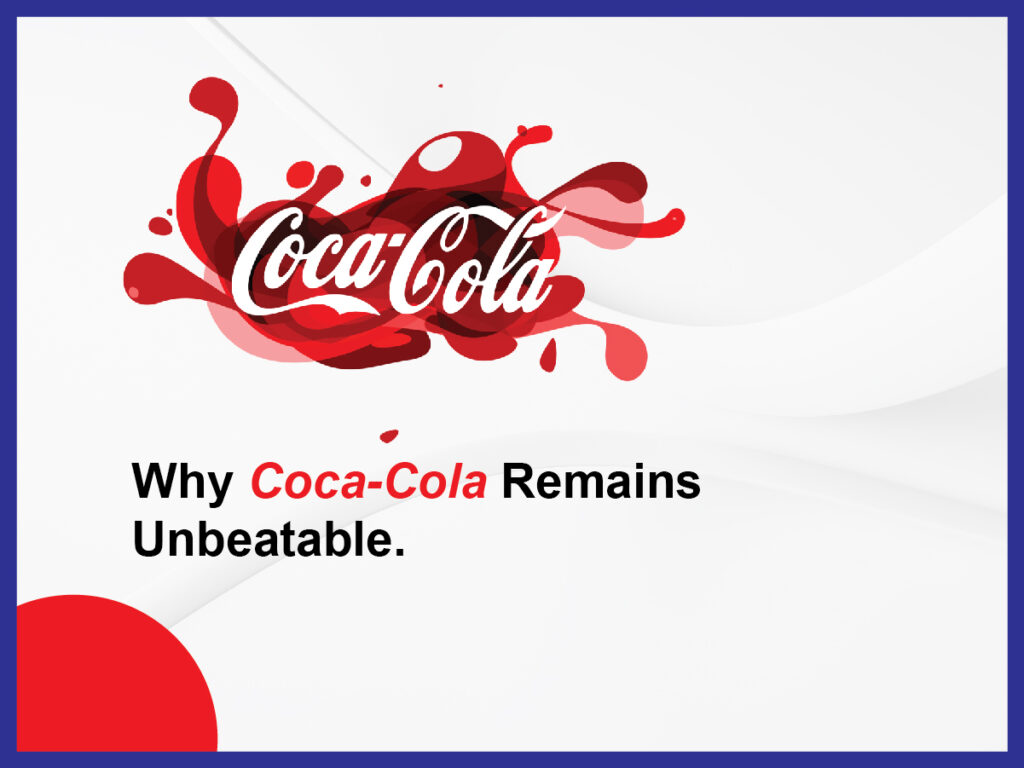
Brand Loyalty: The Unbreakable Bond Between the Brand and the Consumer
Coca-Cola has always been able to create and maintain a bond with its customers. This bond creates a sense of loyalty that other brands find hard to match. Coca-Cola’s customers are not just buying a drink; they are buying a feeling, an experience, and a lifestyle. Coca-Cola is an emotion, and the brand has managed to create an unbreakable bond with its customers.
Brand Consistency: The Commitment to Maintain the Same Quality, Taste and Image Globally
Coca-Cola’s consistency in maintaining its quality, taste, and image can be seen worldwide, and that is why people love it. Coca-Cola drinkers can recognize the taste of the drink irrespective of where they are in the world. The brand has made sure its customers get the same product experience wherever they go.
Sustainability: The Brand’s Efforts Towards Sustainability and Staying Relevant in the Modern World
Coca-Cola has been committed to sustainability and has been implementing strategies to reduce its carbon footprint. The brand has set itself a target of being water-neutral and waste-free by 2020. Coca-Cola’s efforts have helped the brand stay relevant in the modern world by appealing to consumers who seek environmentally friendly brands.
Consistency Across Cultures: How Coca-Cola Maintains a Consistent Message while Adapting to Diverse Cultures
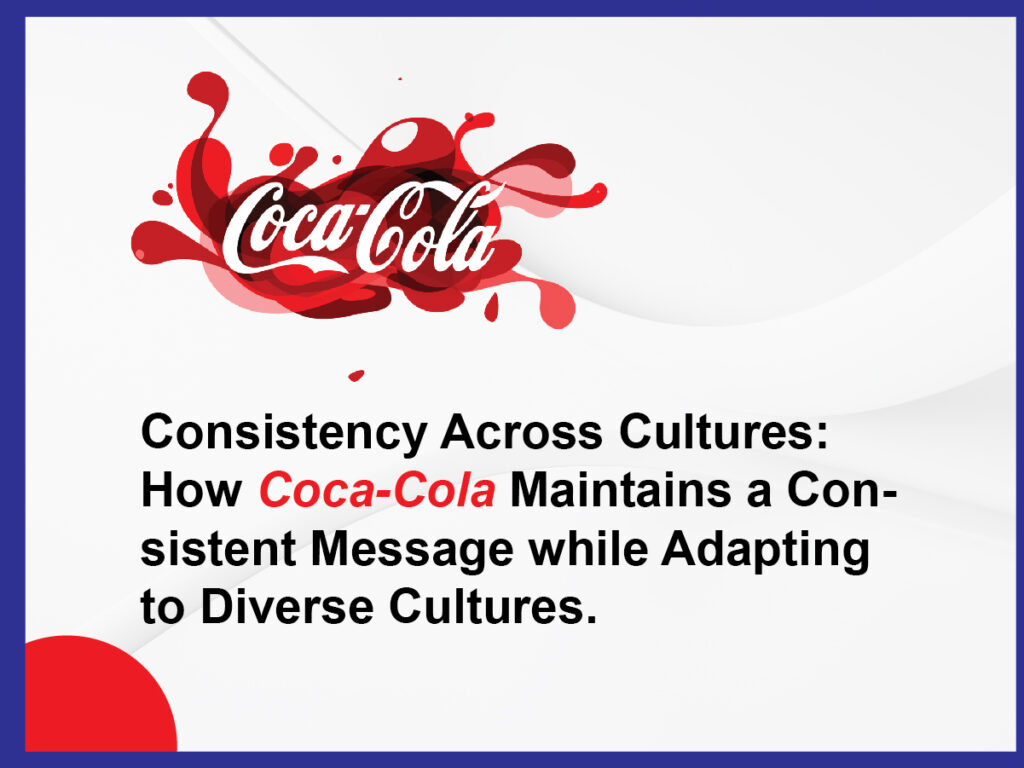
One of the factors that sets Coca-Cola apart from its competitors is its ability to maintain a consistent brand message while adapting to diverse cultures worldwide. Coca-Cola’s success lies in its understanding that people’s tastes, preferences, and cultural contexts differ globally.
To ensure a consistent message across cultures, Coca-Cola has adopted a localized marketing approach. They tailor their branding and communication efforts to resonate with the cultural nuances of each region. For example, during the Lunar New Year in Asian countries, Coca-Cola releases special edition cans with designs that celebrate the occasion. This helps the brand connect with consumers and show appreciation for their cultural traditions.
Furthermore, Coca-Cola’s advertising campaigns display a deep understanding of the values and aspirations of their target audiences globally. They emphasize universal themes such as happiness, togetherness, and celebrating life, making their message relatable worldwide.
Another aspect of Coca-Cola’s success in adapting to diverse cultures is its focus on building strong relationships with local communities. For instance, the brand collaborates with local artists, musicians, and influencers to create campaigns that reflect the unique flavor of each culture. By doing so, Coca-Cola establishes itself as an integral part of the community, fostering loyalty and deeper connections with consumers.
In addition to tailoring their messaging, Coca-Cola ensures consistency across cultures by maintaining core brand elements. While adapting to cultural differences, they maintain a consistent logo, color theme, and overall brand identity. This consistency reinforces their brand’s recognition and helps consumers link each localized campaign to the broader Coca-Cola brand.
Environmental Consciousness: Reviewing Coca-Cola’s Efforts towards Sustainability and Eco-Friendly Practices
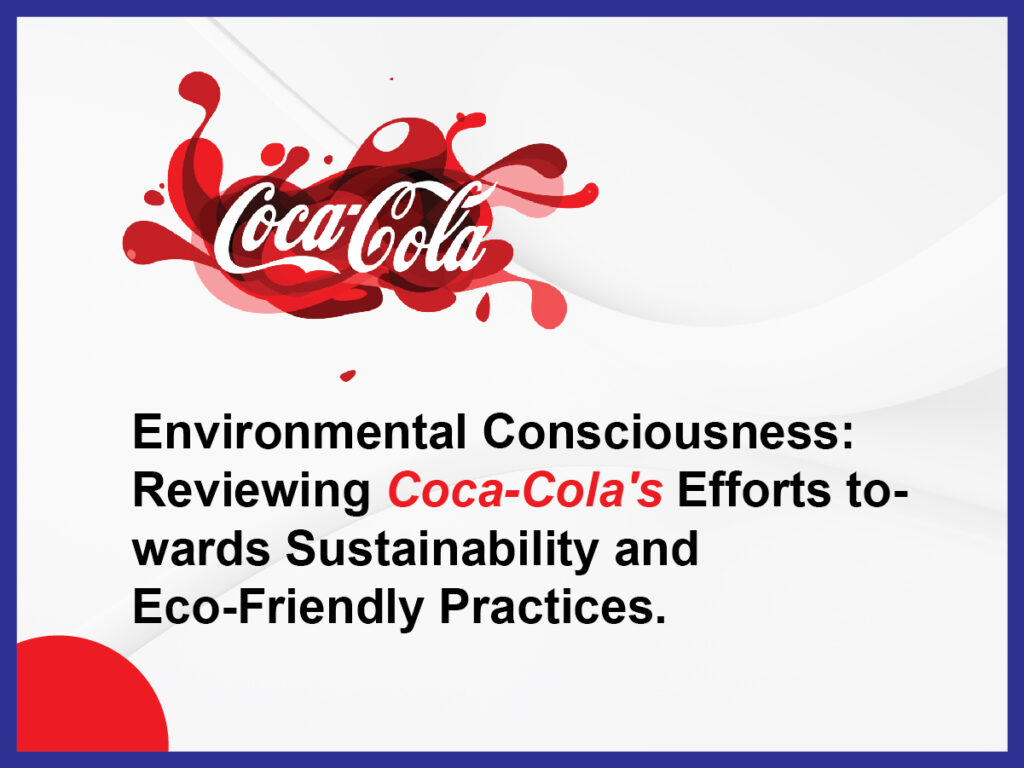
Coca-Cola has implemented various sustainability strategies to reduce its environmental impact and promote eco-friendly practices.
In 2007, Coca-Cola introduced its “Live Positively” sustainability plan, which aimed to focus the company’s efforts towards sustainability and environmentally friendly practices. This plan included several initiatives, such as reducing the company’s water usage, increasing renewable energy usage, and reducing overall carbon emissions.
One of the most significant environmental challenges that Coca-Cola has faced is its water usage. The company requires vast amounts of water to produce its products, and this has led to accusations of water depletion from local communities in some areas. To address this issue, Coca-Cola has implemented several initiatives to reduce its water usage and ensure responsible water management.
One such initiative is the “Replenish” program, which aims to replenish the water used in Coca-Cola’s beverage production. The program’s goal is to balance the water used by Coca-Cola globally by 2020, and the company has made significant progress towards this goal. Coca-Cola has also implemented efficient water usage practices and implemented water conservation programs in several countries.
Another critical aspect of Coca-Cola’s sustainability effort is its focus on packaging and waste reduction. The company has set ambitious goals to reduce its plastic usage and promote recycling. Coca-Cola has introduced various packaging options, such as plant-based bottles and recycled plastic, to reduce the company’s overall environmental impact.
Community Engagement: How the Brand’s Social Responsibility Initiatives Enhance Its Reputation and Influence

Coca-Cola’s social responsibility efforts have become a cornerstone of the brand’s reputation, and the company has implemented several programs to support local communities and promote social and economic development.
One of the most well-known social responsibility efforts by Coca-Cola is the Coca-Cola Foundation. The foundation is dedicated to supporting community projects and investing in sustainable development initiatives worldwide. The Coca-Cola Foundation has invested over $820 million in community programs since its establishment, supporting initiatives such as water stewardship, education, and entrepreneurship.
Coca-Cola has also implemented several community engagements programs to promote economic growth and social development. One such program is the “5by20” initiative, which aims to empower five million women entrepreneurs by 2020. The program provides training and financial support to women entrepreneurs, primarily in developing countries, to create sustainable businesses and promote economic growth.
Conclusion
Coca-Cola’s consistent branding strategy, effective product differentiation, global market penetration, community initiatives, and digital marketing efforts have all been significant factors contributing towards its success. The brand’s commitment to its customers and the community through various CSR initiatives has helped build strong relationships, generate brand loyalty and increase consumer trust.
Consumers have been able to connect with the brand emotionally, thanks to Coca-Cola’s marketing campaigns, which create a sense of happiness and celebration that is hard to resist. Coca-Cola’s significance across diverse cultures and geographic locations further attests to the power of its brand.
By studying the strategies employed by Coca-Cola, other businesses and marketers can glean valuable insights for their own companies. However, it’s vital to note that the effectiveness of these strategies could vary depending on your unique business needs, and you may need to tailor them to suit your brand’s specific circumstances.



